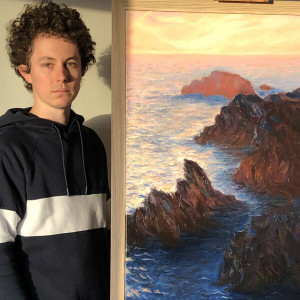Throughout history, the contributions of female painters have been overshadowed, with their iconic works often overlooked despite their artistry and impact. From the Renaissance to the Impressionists and beyond, pioneering women artists like Artemisia Gentileschi, Élisabeth Louise Vigée Le Brun, Rosa Bonheur, and Hilma af Klint carved out spaces in the male-dominated art world, creating masterpieces that challenged societal norms and paved the way for future generations of famous female painters.
Today, the average person only knows about a few famous female painters, like Frida Kahlo and Georgia O’Keeffe, but there are many other notable female painters throughout history! While there are surely many others who remain unknown or uncelebrated, we can do our best to recognise some of the female greats of painting from way back to the modern day.

1. Artemisia Gentileschi (1593 - 1653) "Judith Beheading Holofernes"
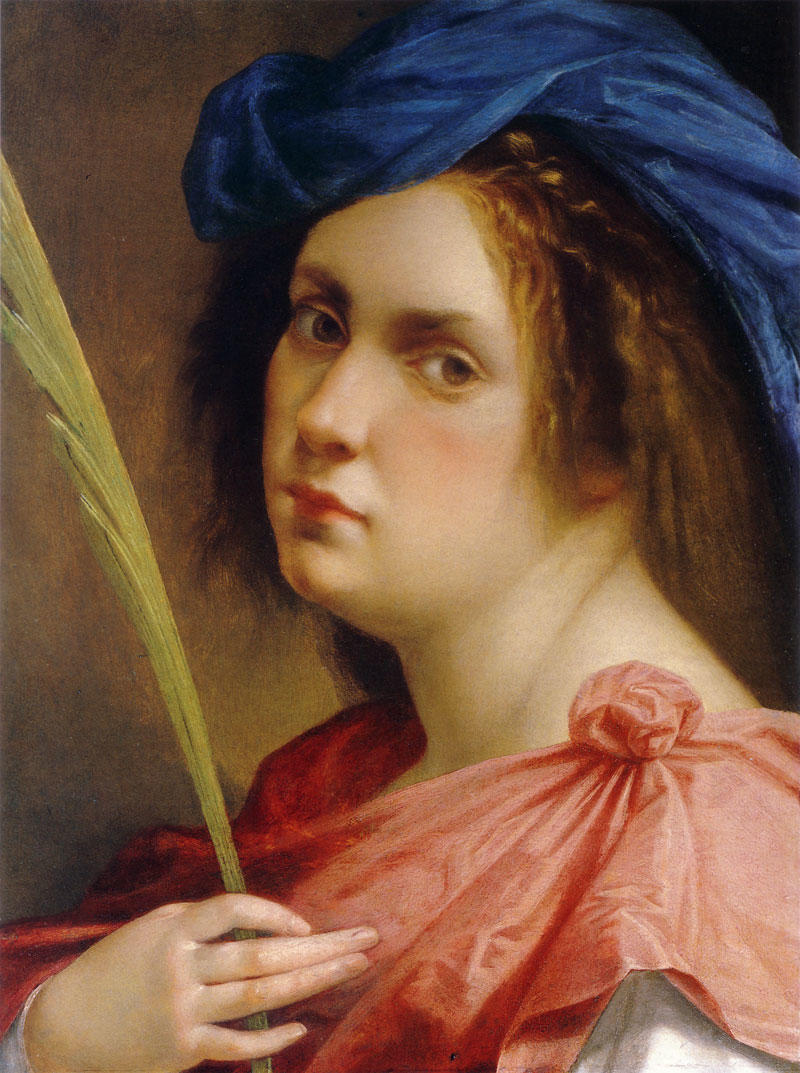
Artemisia Gentileschi was a pioneer for female artists, becoming one of the first and only women painters to succeed in the seventeenth century, and the artist behind one of the most famous paintings by female artists.
Her masterful skill in creating powerful Baroque paintings is indisputable; she painted some of the most dramatic and dynamic works in the style of all time, masterfully using chiaroscuro.
Even more notably, she centred her works around the stories and experiences of women, which was exceptional at the time. She also intentionally flipped traditional depictions of the female protagonists of biblical and mythological stories, presenting them as self-motivated heroines capable of making their own decisions rather than passive objects of the male gaze.
When she was 17, she was raped by a friend of her father. This experience affected her works, and themes of authority, rape, and violence permeated many of her paintings after this time.
Gentileschi has many professional accomplishments, such as being the first female accepted into the Accademia delle Arti del Disegno and working internationally for patrons like the Medici and King Charles I of England.
Date: 1614 - 1620
Style: Tenebrism
Genre: religious painting
Medium: oil, canvas
Location: Uffizi Gallery, Florence, Italy
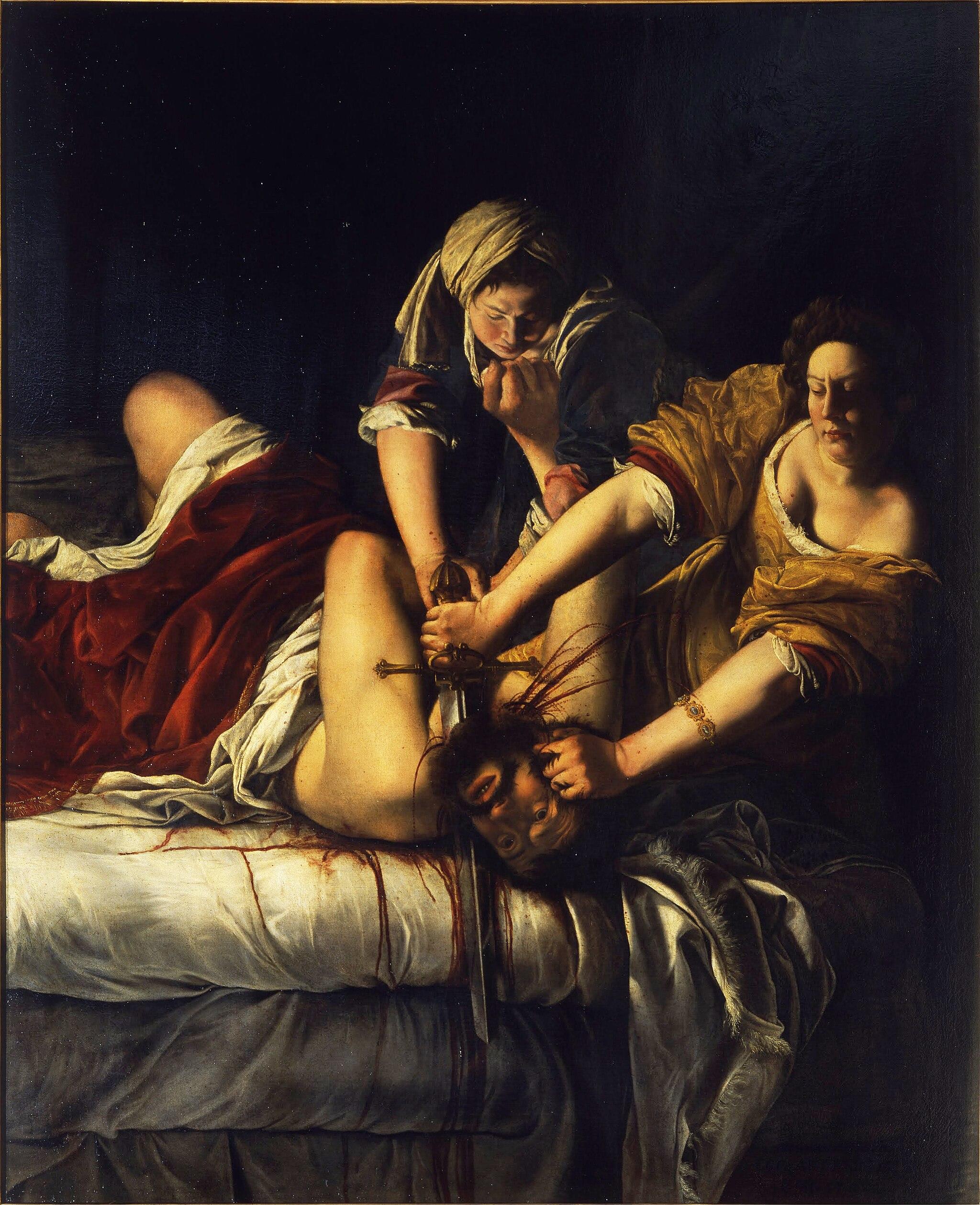
This painting is a powerful depiction of women's strength. In the work, Gentileschi poses the question: “What if women got together? Could we fight back against a world ruled by men?” Her rendition of the Biblical scene adds a touch of realism that Caravaggio overlooked: it would take two women working together to overpower a man.
2. Élisabeth Louise Vigée Le Brun (1755 - 1842) "Self-Portrait in a Straw Hat"
In the 18th century, women faced a lot of obstacles if they wanted to enter the artistic field. Since girls and women were not allowed to study as apprentices or enrol in academies, they typically relied on their fathers for tutelage (if they were lucky enough to have artist fathers).
Le Brun was fortunate in that her father was a portraitist who saw her innate talents and was delighted to teach her. Unfortunately, he passed away when Le Brun was only 12.
However, her natural talent, refined nature, and entrepreneurial spirit helped her impress her way into becoming a hot commodity among the aristocracy. Le Brun understood the importance of maintaining her image since that’s what allowed her to be welcomed and accepted by the wealthy.
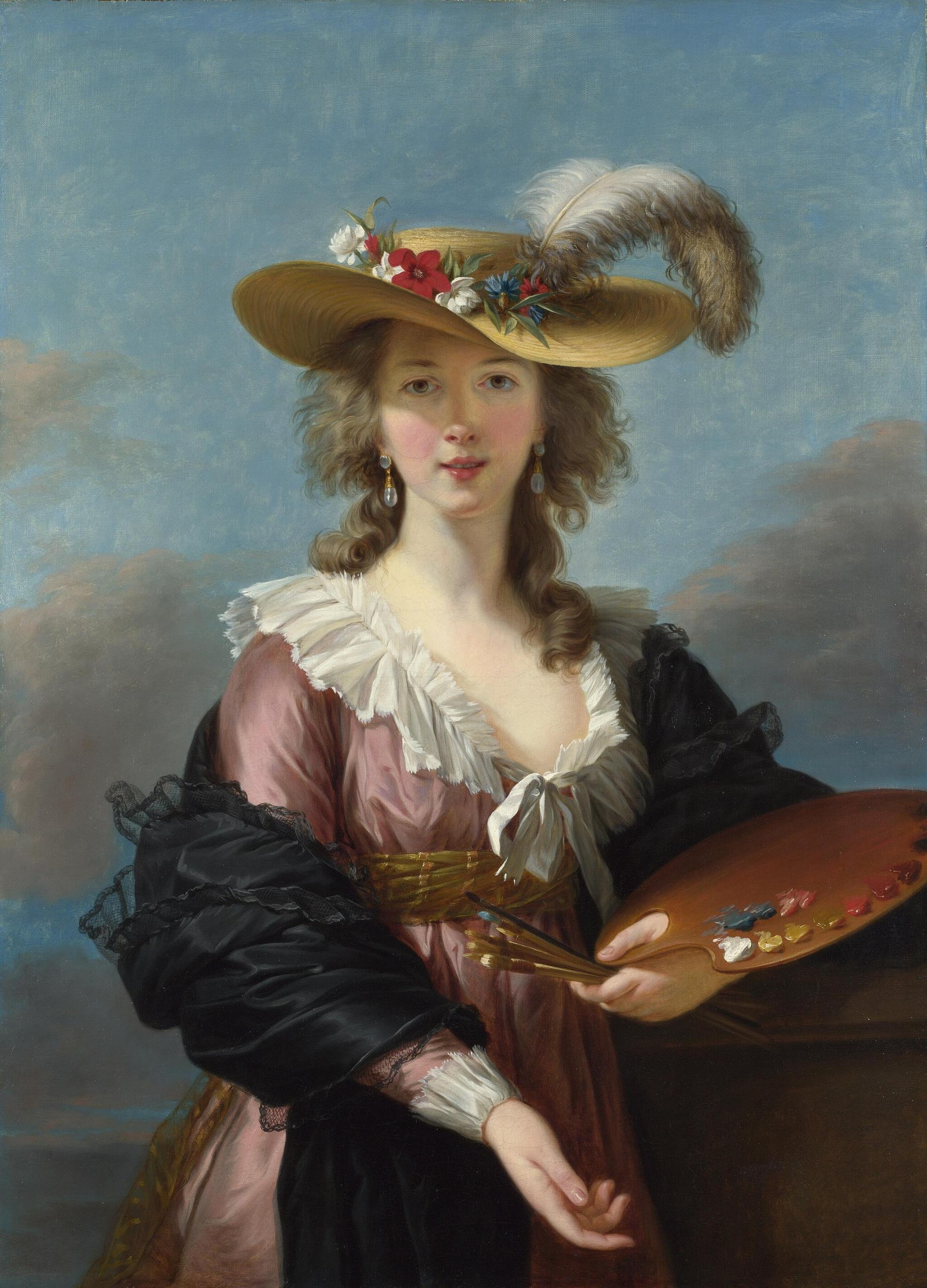
Date: c.1787
Style: Rococo
Genre: self-portrait
Medium: oil, canvas
Location: National Gallery, London, UK
In her famous "Self-Portrait in a Straw Hat," (post 1782) she fashions herself with virtuosic skill, emphasising her beauty and conveying a sense of effortless luxury and wealth. The artist's tools are lovingly depicted, boldly stating "I am a professional painter."
From this painting, potential clients could tell that should they get a portrait from Madame Le Brun, they would be portrayed marvellously – and by such a beautiful woman to boot! A bonus that would appeal to both men and women nobles.
She served as the preferred portraitist to Queen Marie Antoinette in the late 1770s and joined the prestigious Royal Academy of Painting and Sculpture in 1783 via a special edict from King Louis XVI.
During the French Revolution, Le Brun left the country but continued exhibiting work at the Salon to critical acclaim. While in exile, Le Brun spent a lot of time in Russia, where she continued to paint portraits for nobles, including Princess Anna Grigorieva Belosselsky Belozersky.
3. Rosa Bonheur (1822 - 1899) "The Horse Fair"
A boundary-pusher in many ways, Bonheur was a French Realist painter who specialised in depicting animals. She honed her skills at the Louvre and studied animal anatomy extensively, which laid the foundation for her meticulous depictions of animals in motion. At this time, it was extremely unusual for women to receive formal education. Luckily, her family was progressive and supported her goals.
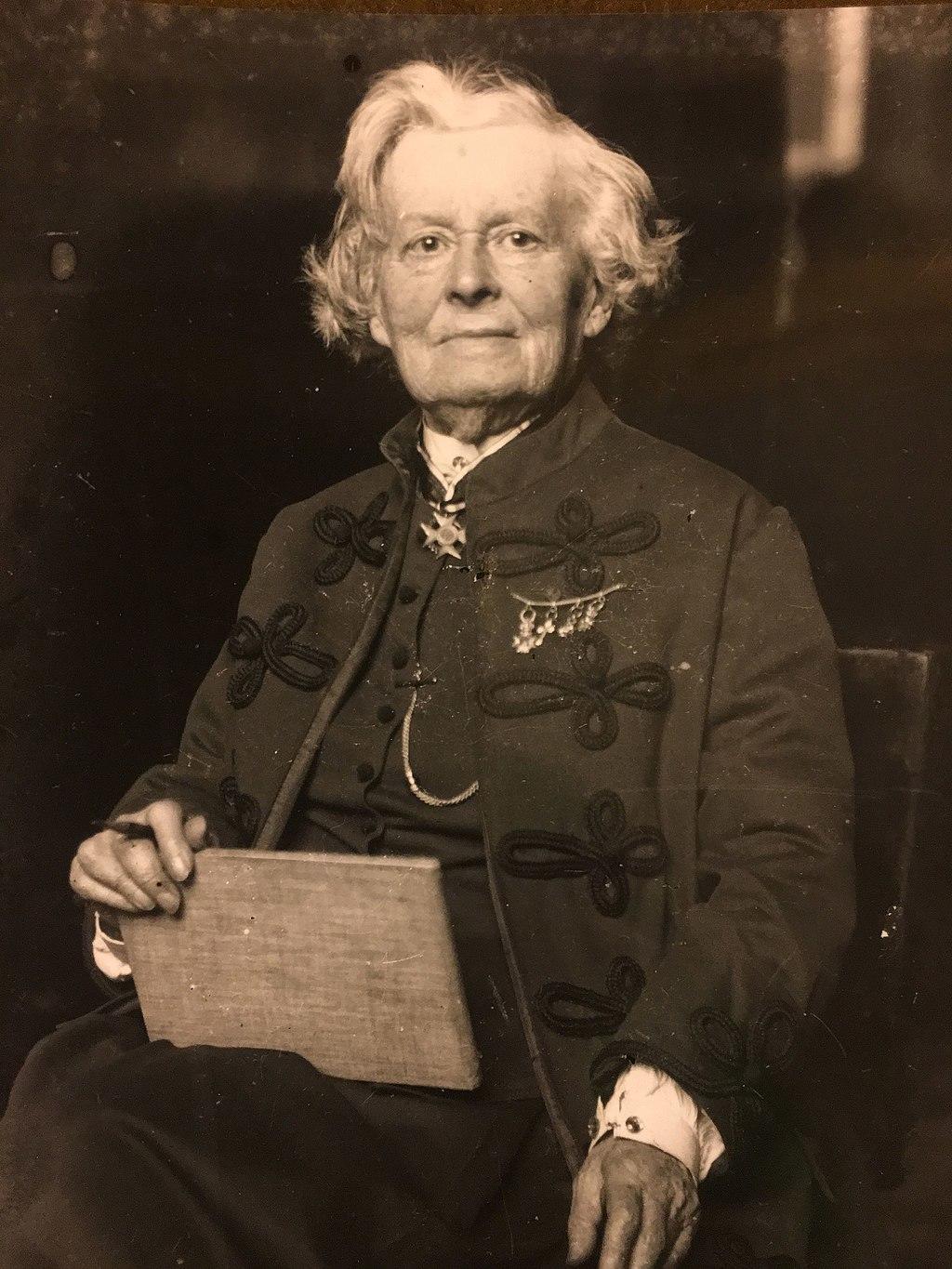
Drawing on inspiration from other masters in form and ancient Greek sculpture, Bonheur would create what she would call “her ‘Parthenon frieze’”: "The Horse Fair" (1852-55).
To prepare for the painting, she visited a Parisian horse market twice per week for over a year, meticulously sketching the powerful draft horses and their handlers. The result was powerful; the colossal 8 x 16-foot canvas captures the raw energy and muscularity of the untamed animals in a swirling vortex of motion.
"The Horse Fair" propelled Bonheur to international fame, as engravings of the scene were circulated across Europe and America. Critics celebrated her technique and execution.
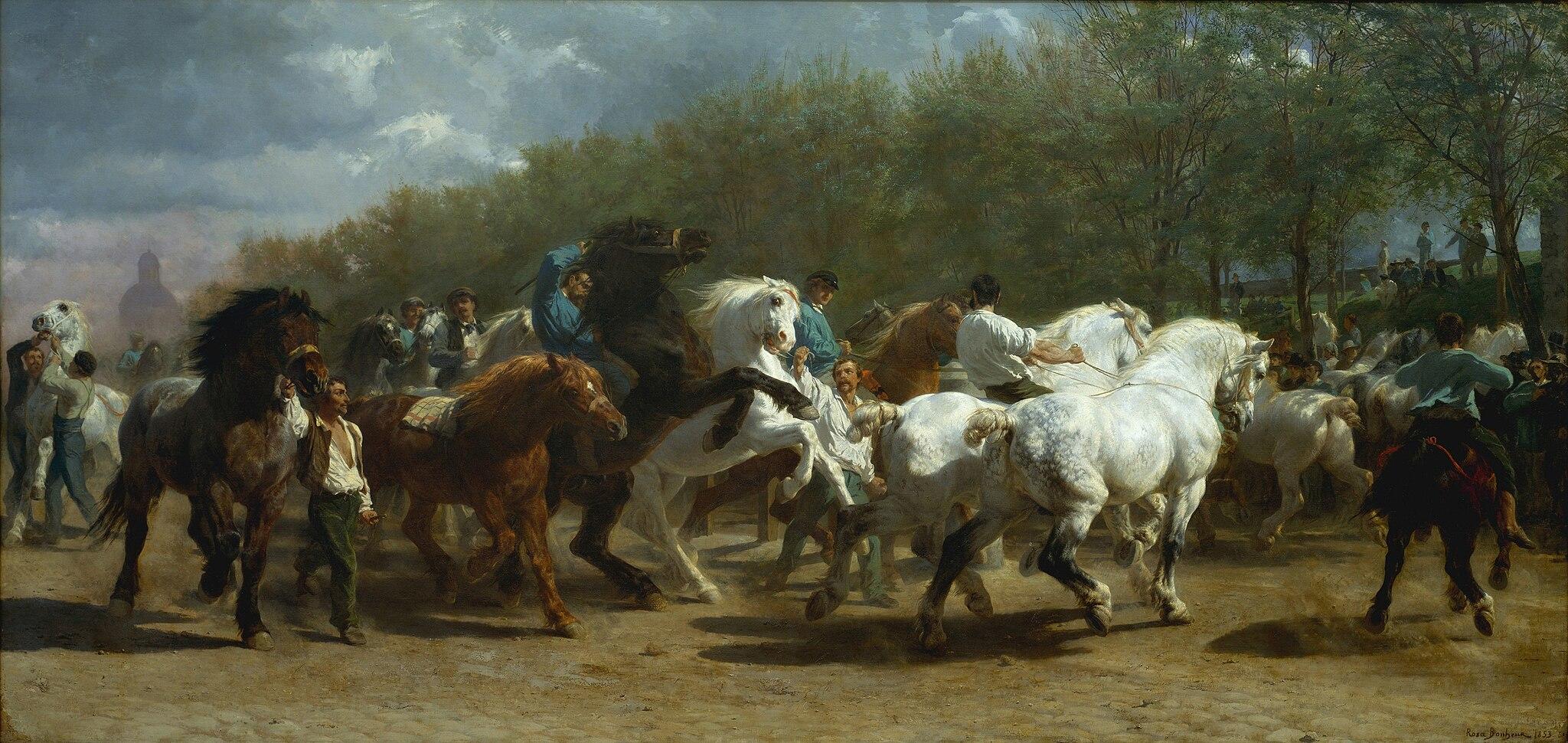
Date: 1855
Style: Realism
Genre: Genre Painting
Medium: oil, canvas
Location: Metropolitan Museum of Art, New York City, US
Bonheur's reputation has endured long beyond her lifetime, influencing generations of artists with her groundbreaking approach to animal art. Additionally, she challenged societal norms by dressing in men's clothing for practical reasons and lived openly with her female partner, which was mostly unheard of in 19th-century Europe.
4. Mary Cassatt (1844 - 1926) "In The Loge"
Cassatt was an American Impressionist painter known for being a significant figure in the movement. Born in Pennsylvania, she spent her early years in France and Germany before studying at the Pennsylvania Academy of the Fine Arts. In 1865, she convinced her parents to let her study in Paris, where she took private lessons and copied the works of the old masters.
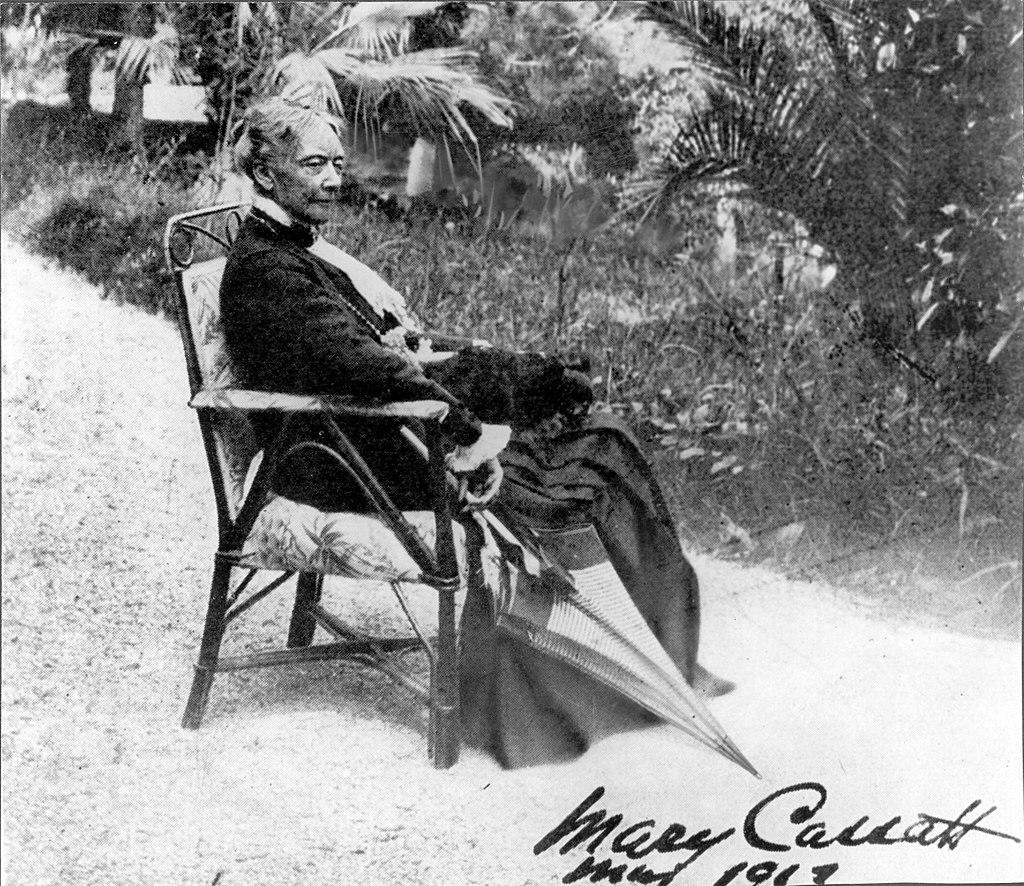
Eventually, she settled in Paris and began exhibiting at the Salons In 1877, Edgar Degas invited her to be the only American officially associated with the Impressionists.
Cassatt was primarily interested in figure compositions and portraying moments in the everyday lives of women. During the late 1870s and early 1880s, her subjects included family (especially her sister Lydia), the theatre, and the opera. Later on, she explored the “Mother and Child” theme thoroughly.
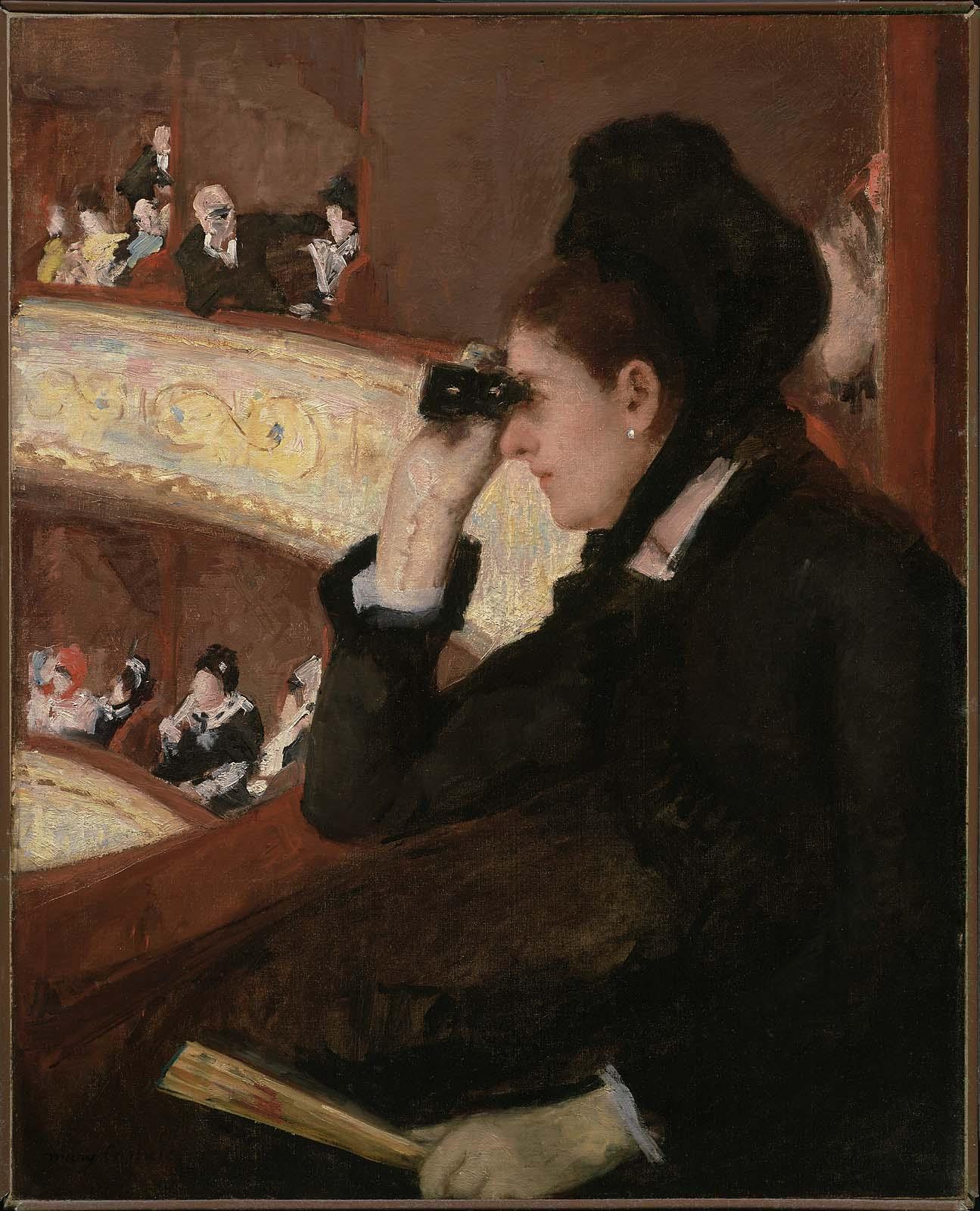
Date: 1878
Style: American Impressionism
Genre: genre painting
Medium: oil, canvas
Location: Museum of Fine Arts, Boston, US
One of her most famous paintings of women is “In The Loge” (1878), which depicts an intimate situation of being close to a lady at the theatre. She is engrossed in the stage performance, her wrist exposed but not rendered in detail. Instead, her expression is the most clear part, reinforcing the theme of “observing.” A man in the background peers at her (in our direction) through his own opera glasses, adding more interactivity and “observation” to the scene.
Critics at the time hailed the piece, saying that it was even more masterful than any man’s work (an immense compliment at the time). It remains one of the most iconic famous paintings by women artists.

5. Hilma af Klint (1862 - 1944) "The Swan No. 17"
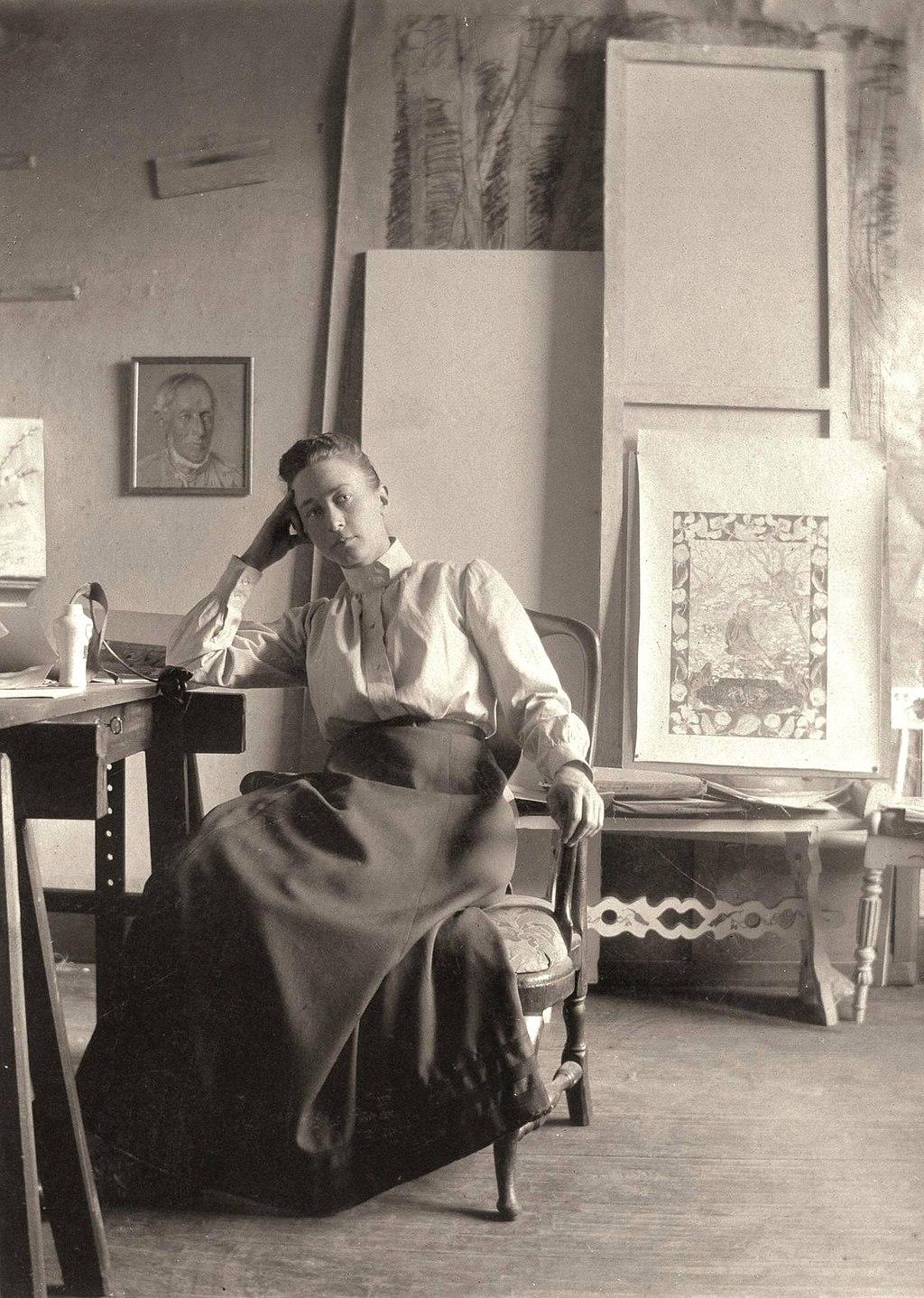
Hilma af Klint was a pioneer of abstraction. Early in her painting career, she developed her unique abstract style, unlike anything that had been seen before. Her style preceded other well-known abstract artists like Vasily Kandinsky, Kazimir Malevich, and Piet Mondrian by years.
When Hilma af Klint began creating radically abstract paintings, they were completely novel: bold, colourful, and untethered from any recognisable references to the physical world. Her work was influenced by her involvement with spiritualism and theosophy.
Date: 1915
Style: Abstract Art
Genre: abstract, symbolic painting
Medium: oil, canvas
Location: Moderna Museet, Stockholm, Sweden

Her sequence of works known as “The Swan” (1914-1915) shows the intermingling of opposing forces. Each painting depicts similar opposing themes, like light and dark, male and female, and life and death. In alchemy, swans represent the union of opposing forces, and since af Klint was involved in the theosophic world, the symbolism was deeply meaningful to her.
Over the course of 24 works, the swans deconstruct more and more, breaking down the symbolised ideas into their simplest parts.
In “The Swan No. 17” (Full name: “Group IX/SUW, No. 17, The Swan”) the pair are as close as they can be without losing their individuality, almost like a yin-yang.
6. Käthe Kollwitz (1867 - 1945) "The Mothers"
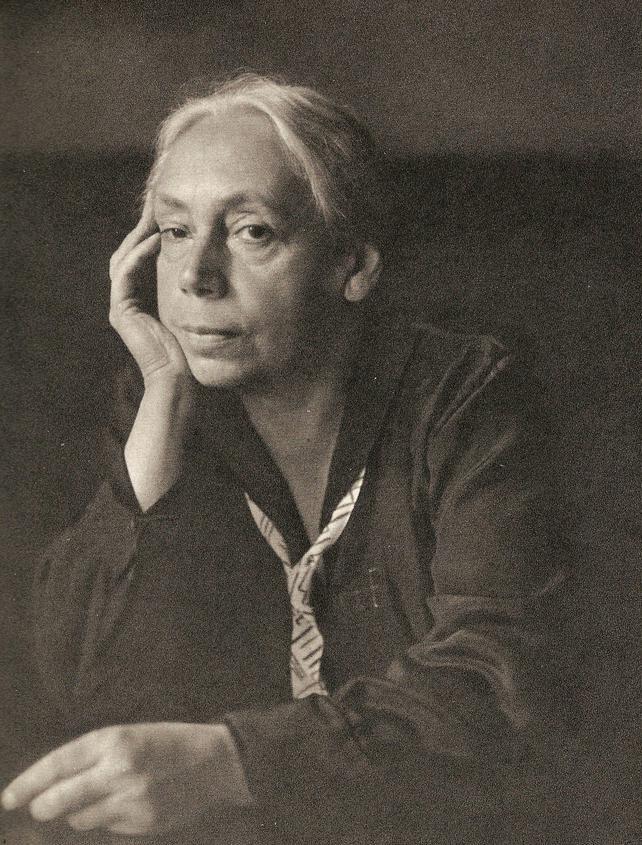
Kollwitz dedicated her professional artistic career to documenting and bringing awareness to social issues and their effects on the people. She found her niche in printmaking and was well-versed in different techniques.
Since she was a proponent of the people, Kollwitz was greatly inspired by female revolutionaries and the story of “Black Anna,” the woman who instigated the Peasant Rebellion in the 16th century.
Often, Kollwitz depicted mothers in various life events which helped explore the themes of war, grief, and the impact of conflict on those away from the battlefield. Kollwitz created several self-portraits and portrayed women working, mourning, and leading revolutions.
Date: 1922
Style: Expressionism
Genre: Genre Painting
Medium: Woodcut on paper
Location: Käthe Kollwitz Museum Köln, Köln, Germany
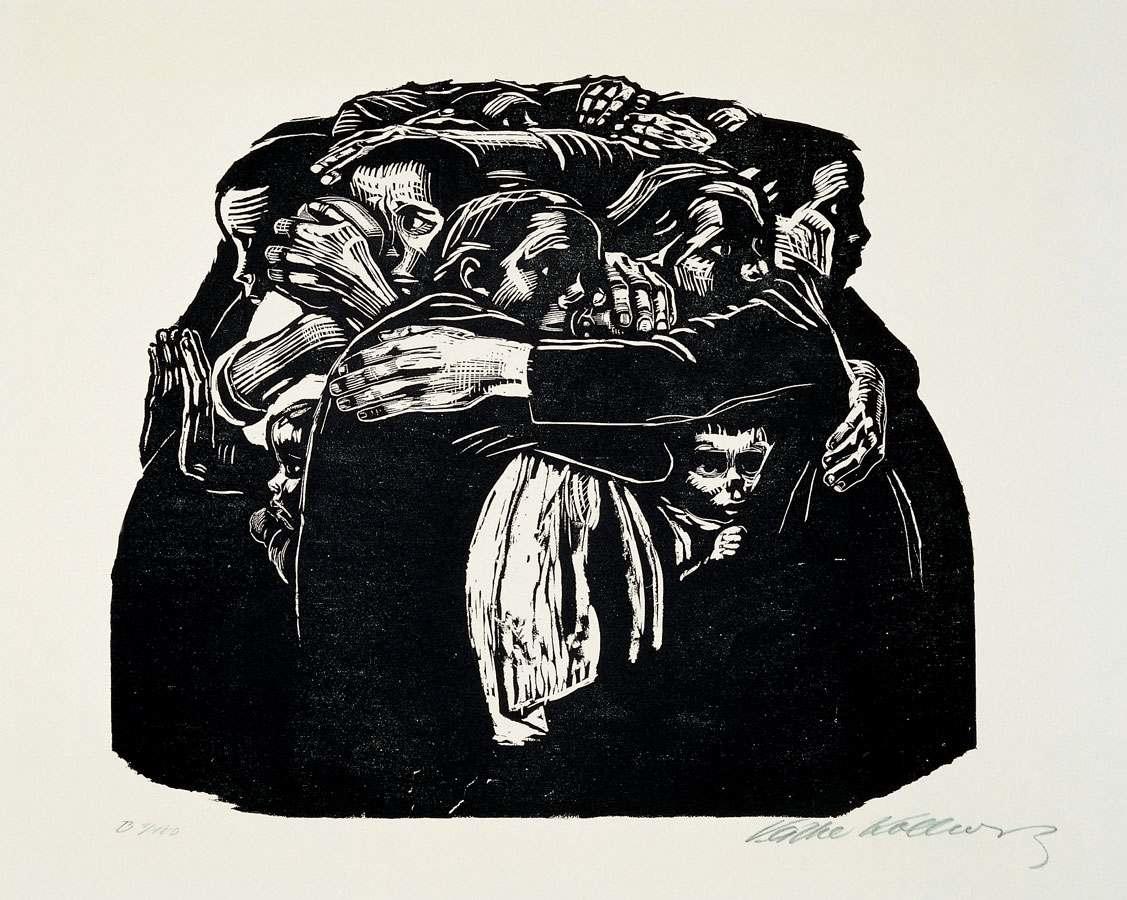
"The Mothers" (“Die Mütter”) (1922-23) poignantly captures the grief and anguish of mothers who have lost their sons to war. Through expressive lines and stark contrasts, Kollwitz conveys the universal themes of maternal sorrow and the devastating impact of conflict on families. Having just lost her own son, the emotion captured in the print is harrowing and deep.
On the 40th anniversary of her death, 22 April 1985, the Käthe Kollwitz Museum in Cologne was founded. Today, the museum is home to the largest collection of her work, showcasing the various impactful works she made during her lifetime.
7. Emily Carr (1871 - 1945) "The Indian Church"
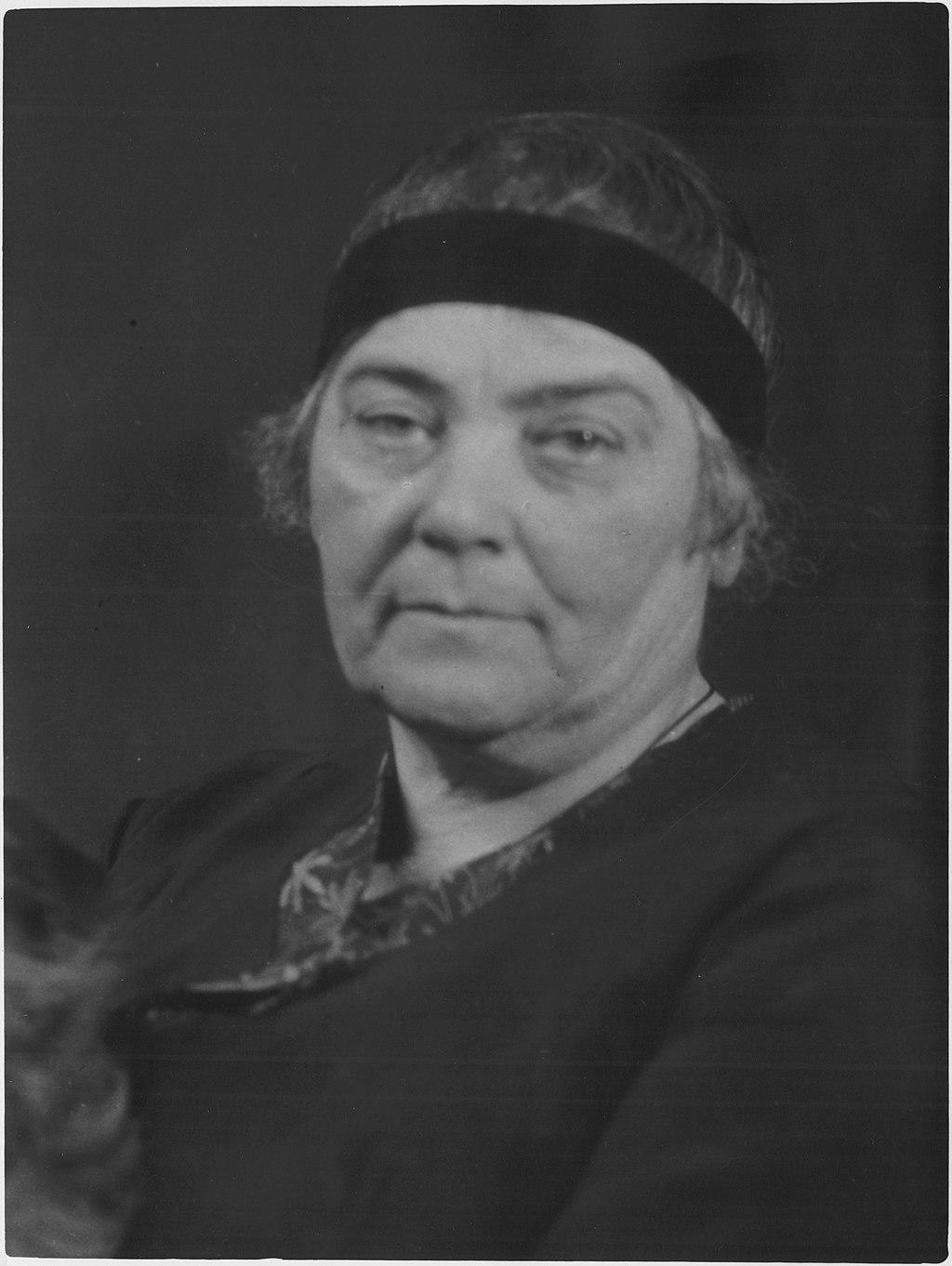
Carr began her artistic training in 1890 at the California School of Design in San Francisco. Later, in Paris, Carr immersed herself in the avant-garde movements of Post-Impressionism and Fauvism, sparking a shift in her style.
She began visiting Indigenous and First Nations villages, documenting the art and culture in an attempt to preserve it (a colonist idea, however well-intentioned).
She did succeed in bringing awareness to the ill-treatment and hardships facing many First Nations peoples across Canada.
Her works portrayed a deep sense of mourning and decay experienced by the indigenous peoples as they were forced out of their ancestral homes and cultures. The themes of belonging and displacement in the context of a post-colonist world were prevalent throughout her work. Carr’s art was a means of urging others to pay attention and care about these issues.
Date: 1922
Style: Expressionism
Genre: Genre Painting
Medium: Woodcut on paper
Location: Käthe Kollwitz Museum Köln, Köln, Germany
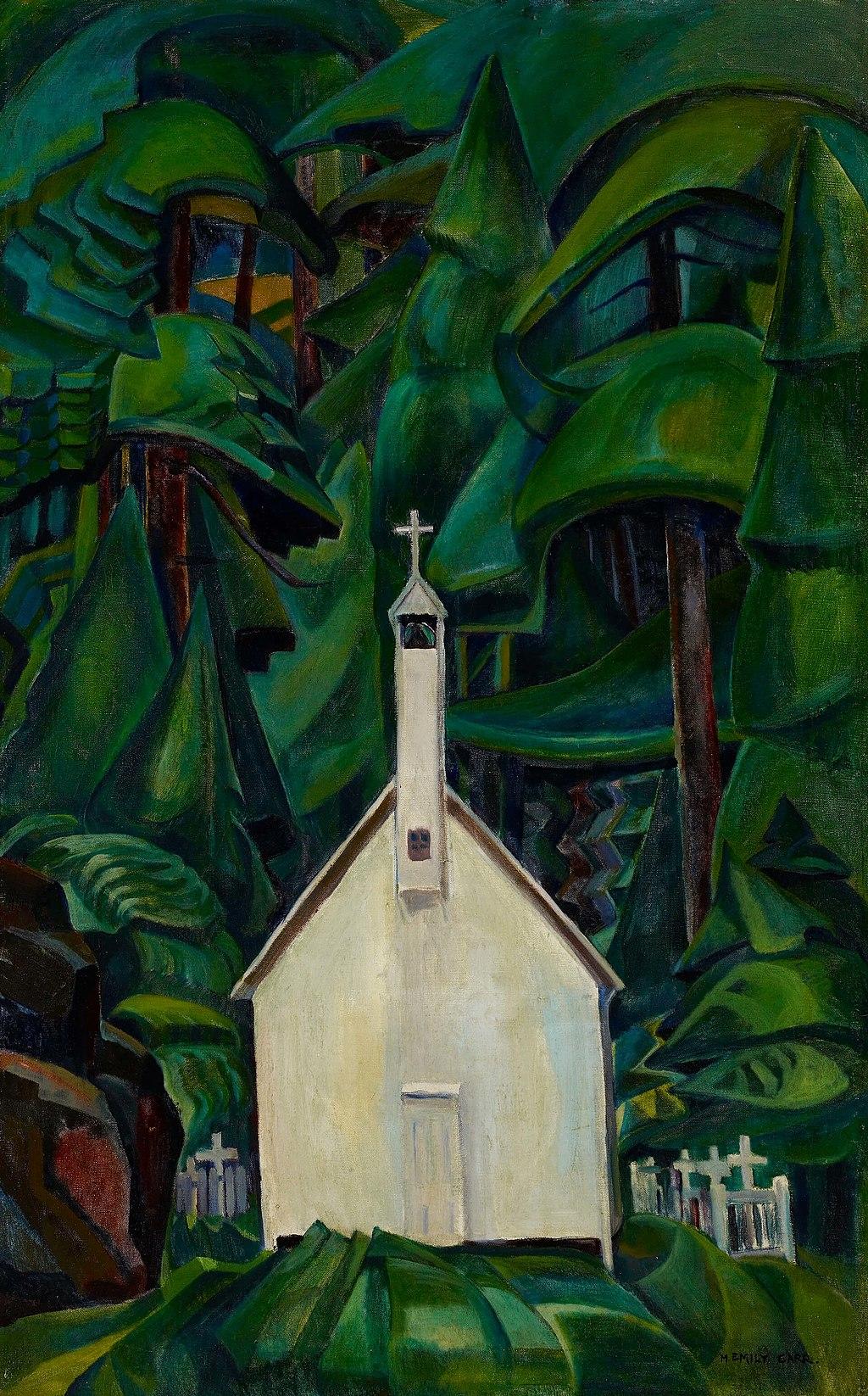
"The Indian Church" (1929) depicts a simple white church engulfed by a dense forest, symbolizing the incursion of settler beliefs and the vulnerability of Indigenous traditions. The crosses surrounding the church suggest multiplying graves, signifying the failed mission.
In 2018, The Art Gallery of Ontario retitled the painting “Church at Yuquot Village” in an attempt to give credit to the inspiring source. Critics of this choice say the change contradicts Carr’s intentions, while supporters say it’s a way to contextualise colonial history.
This discourse reflects the ongoing complexities surrounding Carr's legacy and representation of Indigenous cultures.
A lot of Carr’s body of work received criticism for appropriating Indigenous art, especially after the 1990s, however, it still captures the audience’s attention today, hopefully inspiring empathy and motivation to help.
8. Clarice Beckett (1887 - 1935) "The Yarra, Sunset"
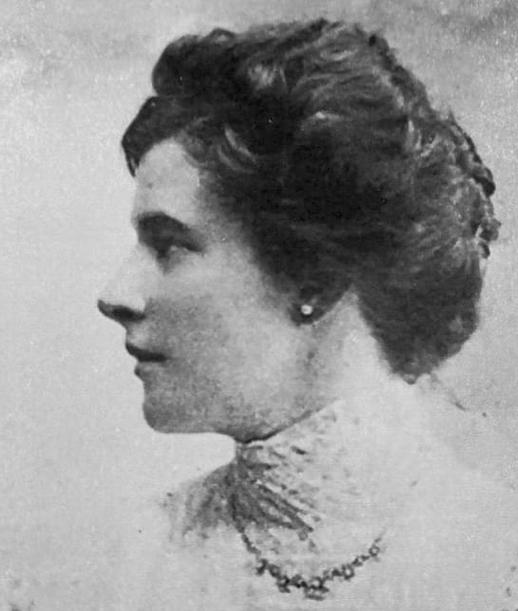
Clarice Beckett was an Australian artist born in Casterton, Victoria. In her late education, she joined the controversial tonalist painter and teacher Max Meldrum's private art school.
In 1919, Beckett moved with her aging parents to Beaumaris, a suburb of Melbourne, where she lived and painted for the rest of her life. She loved painting en plein air, often rising at 4 am to capture the changing light and atmosphere of dawn.
Her paintings depict everyday views of her local environment. Some of her favourite subjects were moving cars, trams, waves, shadows, and lone figures, in addition to scenes depicting beachscapes and suburban streets. She loved capturing the tranquillity of dawn and dusk, in between the hustle and bustle of the day and the heavy blanket of night.
Date: c.1930
Style: Australian tonalism
Genre: Landscape
Medium: oil on board
Location: National Gallery of Australia, Parkes, Australia

One of her notable paintings, "The Yarra, Sunset" (1930), exemplifies her signature style of capturing atmospheric light and quiet urban scenes. Using a subdued palette to convey the ethereal depiction of twilight, Beckett's work often portrays Melbourne landscapes bathed in soft, luminous hues. Many of her paintings reflect her mastery of evoking fleeting moments of natural beauty and tranquil cityscapes.
To paint her hazy scenes, Beckett approached the easel with relaxed, blurred eyes and no preparation. She aimed to paint exactly what she saw, like a stylised photograph. Even though many people called the work “foggy” at the time, many others understand and appreciate the dreamy quality Beckett’s work emits.
Beckett is recognized as one of Australia's most important painters of the interwar period. Her paintings provide insight into everyday life in Melbourne at the time, capturing the essence of her local suburban environment with a unique atmospheric quality.
9. Grace Cossington Smith (1892 - 1984) "The Window"
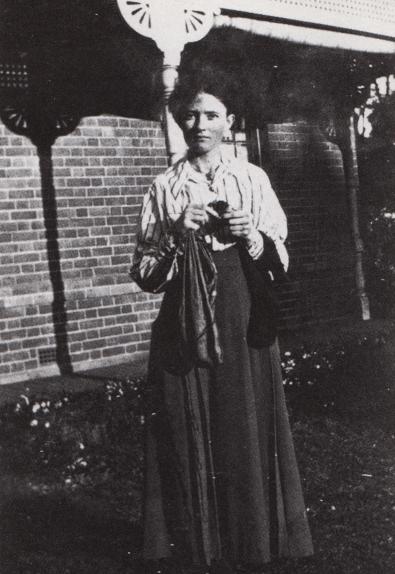
Smith was an Australian post-impressionist painter renowned for her brilliant use of colour and her pivotal role in the development of modernism in Australian art. She was born in Neutral Bay, Sydney, and received her early art education at Abbotsleigh, where she was encouraged to pursue her passion for painting.
Cossington Smith's acclaimed masterpiece, "The Window" (1956), is one of her largest pointillist interior compositions and the last of its scale remaining in private ownership. This distinctly Australian painting features a central doorway opening out to a tall gum tree and surrounding native flora, with the foreground awash in warm tones depicting the artist's surroundings.
Date: 1956
Style: Post-Impressionism
Genre: interior
Medium: oil on hardboard
Location: 20th Century Galleries, Sydney, Australia
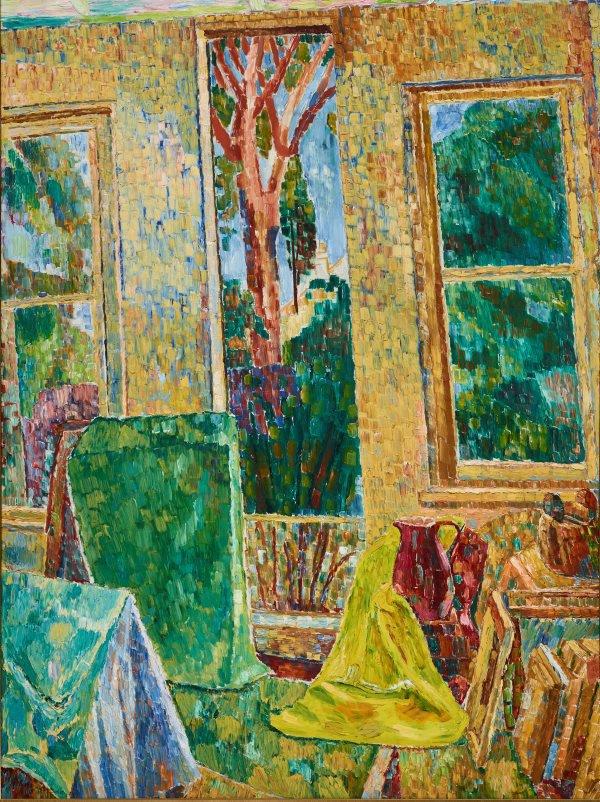
The artfully constructed composition of yellow, purple, blue, and green hues immediately engages the viewer, showcasing Cossington Smith's mastery of colour. "The Window" is part of a series of luminous interiors characterized by mosaic-like feathery brushstrokes, such as "Garden from the Studio."
10. Emily Kam Kngwarray (1910 - 1996) "Big Yam Dreaming"
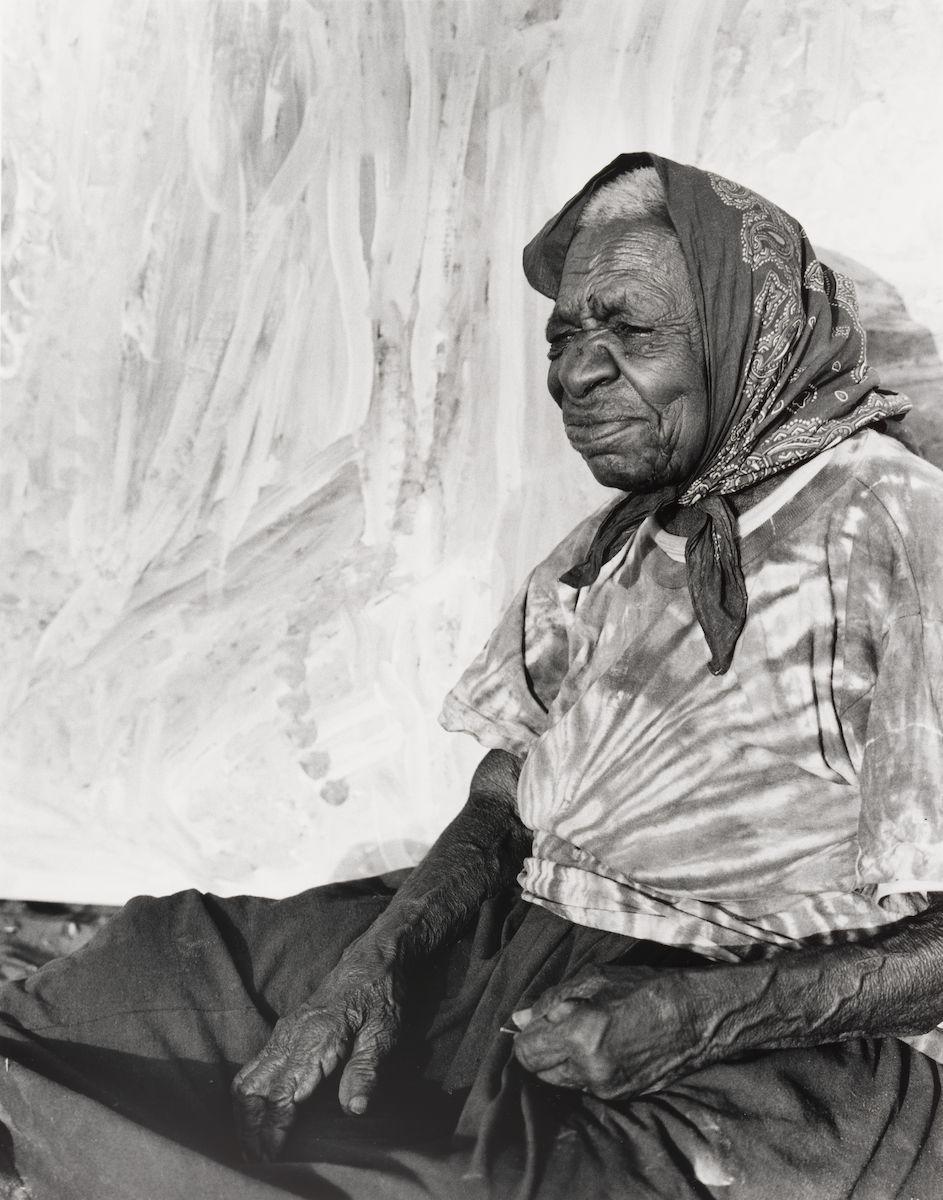
Emily Kam Kngwarray (sometimes spelled "Kame Kngwarreye") was a renowned Australian Aboriginal artist from the Anmatyerre community in Utopia, in the Northern Territory. She is celebrated for her vibrant and expressive paintings that depict the Dreaming, spiritual beliefs and cosmology of Aboriginal Australians.
Many of Kngwarray's works revolve around the wild yam Dreaming, of which she was a senior custodian within her community's kinship structure. The intricate web of lines and dots in her paintings may represent the paths trod by ancestors, natural forces, or the twining vines of the wild yam plant.
In 1996, Kngwarray produced a remarkable body of work depicting the pencil yam Dreaming, mostly using a rich ochre colour palette. This final burst of creative energy before her passing, known as her "scribble phase," saw her replace her earlier styles with linear tracings and dots with flowing threads of interwoven colours and lines.
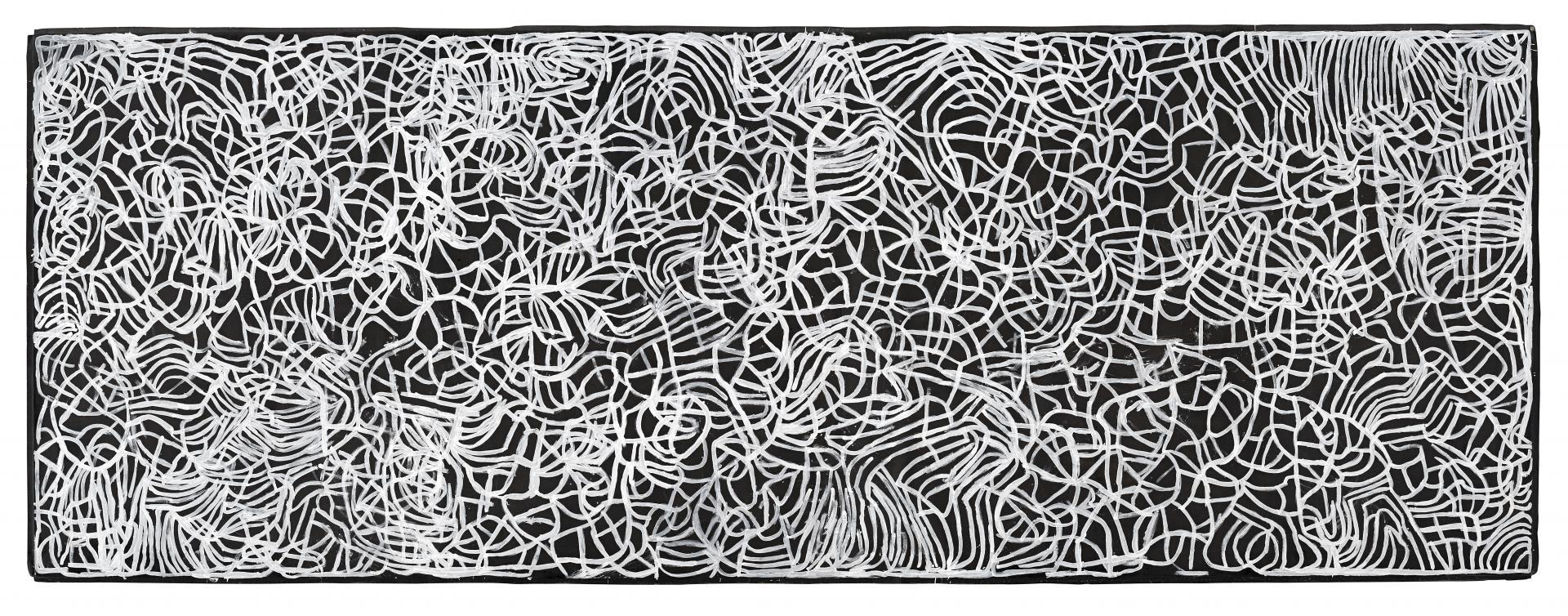
Date: 1995
Style: Abstract Expressionism
Genre: Contemporary Indigenous Australian Art
Medium: synthetic polymer paint on canvas
Location: National Gallery of Victoria, Melbourne, Australia
In this last hurrah, she created a massive 8 by 3 metres piece, called "Anwerlarr Anganenty" (“Big Yam Dreaming”) (1995). The dancing white lines laced over the black background are inspired by many things, like women’s body paint and the roots of the pencil yam spreading beneath the soil.
These abstract works do not have one singular interpretation. Instead, they attempt to present the visual poetics of the complex interweaving between people, plants, and places in Aboriginal societies. Just like how everything in life is interconnected, the represented ideas of Kngwarray’s work cannot be reduced to one thing.
Despite facing numerous societal barriers, these accomplished female artists challenged conventions and paved the way for future generations. Women are resilient, determined, and can easily be contemporaries of men in the artistic field; and they always have been.
As we continue to rediscover and appreciate the contributions of these remarkable women, we not only enrich our understanding of art history but also inspire a more inclusive and diverse artistic landscape. Their enduring legacies encourage us to recognize and uplift underrepresented voices, ensuring that the transformative power of art remains accessible to all.









